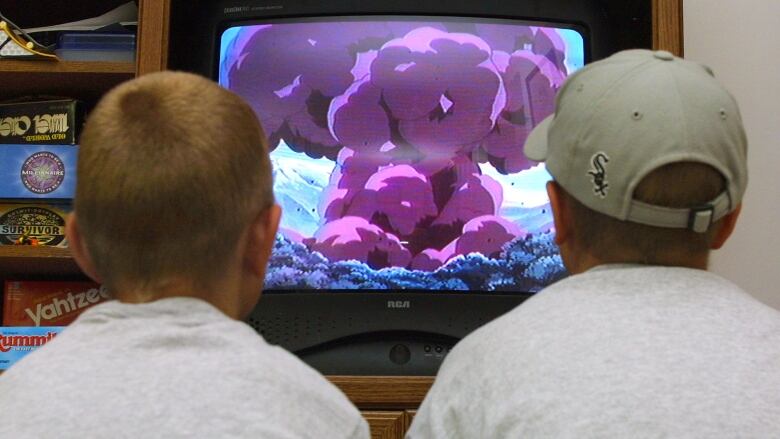Pediatrics experts make recommendations to curb 'virtual violence' in children's lives
No way to tell who is vulnerable to link between violence and aggression until it is too late

The immersive and inescapable way children and teens are exposed to violence in their "media diet"on social media apps, video games andmovies can make them more aggressiveand fearful, the American Academy of Pediatrics says in a new policy statement.
The group released its updated advice, titled "Virtual violence," in Monday's online issue of the journal Pediatrics.
"We've switched from calling it screen aggression or screen violence to virtual violence to capture the more immersive ways children can experience media violence today," said Dr. Dimitri Christakis, a pediatrician at Seattle Children's Research Institute and the principal author.
- How Facebook Live could shift perceptions around police violence
- Faraway tragedies have real emotional impacts at home
"Very soon it's going to be virtual reality violent video games. That makes the experience that much more intense and the recommendations that much more important."
Quantity of screen time has dominated the conversation about how parents can reassert control of their children's media habits, Christakis said.
While limits are needed, it's more important to focus on quality, he said, adding that media can be educational and entertaining but there are also risks.
"Your child might be at greater risk than others, particularly when parents see aggressive tendencies in their children, they should make very concerted efforts to reduce the violence in their child's media diet."
The team defined aggressivebehaviour as intentionto harm another person, whether psychologically or physically. In kids, it includes being rude, arguing or driving aggressively.
Violence is aggression with the goal of extreme physical harm, such as injury or death.
Watch or play with your kids
The group's recommendations include:
- Parents should be mindful of their child's media consumption, and should watch media and play games along with their children.
- Protect children under age sixfrom all virtual violence, because they cannot always distinguish fantasy from reality.
- Policy-makers should consider legislation to prohibit easy access to violent content for minors and should create robust ratings for games that are clearer and more user-friendly to guide parents.
- Pediatricians should advocate for and help create positive media for children and collaborate with the entertainment industry on shows and games that don't include violence as a central theme.
- The entertainment industry should create content that doesn't glamourize guns or violenceand eliminates gratuitous portrayals of violence, misogynistic or homophobic language.
- In video games, humans or living targets should never be shot for points.
- The news media should acknowledge the proven scientific connection between virtual violence and real world aggression.
The link between violence and aggression in children is settled, said Dr. Bruce Ballon, a psychiatrist at the Centre for Addiction and Mental Health in Toronto. He agrees with the U.S. recommendations, though he was not involved in their creation.
Games desensitizeto violence
"Not everybody who uses technology is going to get into problematic use of it," said Ballon, who treats young people aged 16 to 24 atCAMHand studies the effects of violent video games on mental health.
"There's lots of vulnerability factors, learning disorders, attention deficit issues, social anxiety," he added.
The problem is there is no way to tell who is vulnerable to simulations in video games, such as first-person shooter games developed by the U.S. military to de-sensitizesoldiers,until it is too late, he said.
Youth and children may also be exposed toreal-life violence through mobile devices. That may result in distress, victimization or fear among teens who don't yet have the skillsto contextualize risk, Christakissaid.For others,sharing real-life events seen on mobilemay bolster valuable social action and encourage thinking about police accountability.
Ballon said hesuspects the U.S. is further ahead than Canada on exploring the link between causes of gunviolenceand use ofmedia.
The Canadian Paediatric Society said it's formed a task force to develop a similar updated statement for pediatricians and family physicians on how to discuss media use with parents and families.
With files from CBC's Amina Zafar and Vik Adhopia












_(720p).jpg)


 OFFICIAL HD MUSIC VIDEO.jpg)
.jpg)



























































































